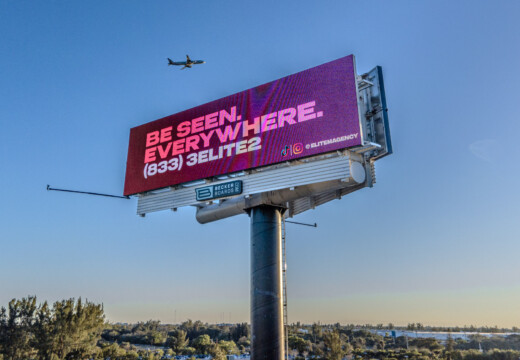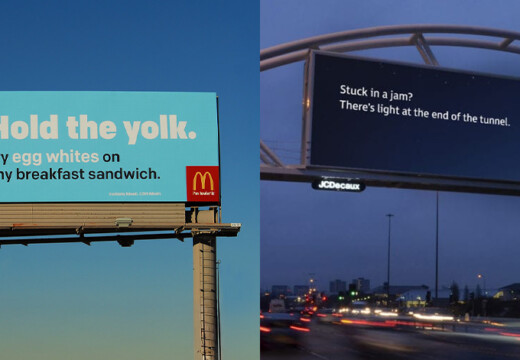Digital billboards are highly effective, with 75% of people recalling ads they’ve seen in the past month. The key to success? Placing them where they’ll get the most visibility and engagement. Here are the top 8 locations for impactful digital billboard advertising:
- Main Roads & Highways: High visibility for daily commuters.
- Major Intersections: Longer viewing times at traffic stops.
- Bus & Train Stations: Consistent exposure to daily travelers.
- Popular Attractions: Reach tourists and locals alike.
- Retail & Business Districts: Target shoppers and professionals.
- City Junction Points: Natural traffic slowdowns for better attention.
- Community Spots: Parks, squares, and centers for local engagement.
- Sports & Concert Venues: High-energy events with large crowds.
Why These Locations Work:
- High Traffic: More eyes on your ad.
- Longer Viewing Times: Captive audiences during stops or slowdowns.
- Targeted Demographics: Match locations to your ideal customers.
Pair the right location with dynamic, relevant content, and you’ll create campaigns that people remember. Keep reading to learn how to maximize your impact at each location.
Digital Billboards: GeoFencing Strategy
1. Main Roads and Highways
Main roads and highways are prime spots for digital billboard ads, offering unmatched visibility to daily drivers and commuters.
Digital billboards, positioned at safe viewing distances, ensure drivers can easily take in your message without distractions. Formats like 48-sheet (6m x 3m) or 96-sheet (12m x 3m) are large enough to stay noticeable, even at highway speeds.
Why advertise here?
| Advantage | How It Helps |
|---|---|
| Longer Viewing Time | Traffic congestion during rush hours gives viewers more time to notice your ad. |
| Frequent Exposure | Regular commuters see your ad repeatedly, reinforcing brand awareness. |
| Location-Specific Impact | Ads near business hubs or shopping areas can influence buying decisions. |
To make the most of these benefits, focus on placing your ads in high-traffic areas like:
- Exits leading to shopping or commercial districts
- Busy interchanges with steady traffic flow
- Entry points to major cities
- Routes connecting neighborhoods to office areas
Digital billboards also let you use dayparting – adjusting your content based on traffic flow and time of day. This ensures your message reaches the right audience when they’re most likely to see it.
2. Major Street Intersections
Intersections provide a unique opportunity for digital billboard advertising, especially since they engage audiences during stops. These locations are prime spots due to their high visibility and longer viewing times.
Why Choose Intersection Placements?
| Feature | Benefit | Impact |
|---|---|---|
| Traffic Light Stops | Longer viewing time | Better message retention |
| Multi-directional Views | Reaches traffic from all sides | Broader audience exposure |
| Pedestrian Traffic | Adds foot traffic visibility | Stronger local connection |
| Rush Hour Advantage | Captive audience during peak times | Maximum exposure during busy hours |
Digital billboards at major intersections can significantly increase impressions. Their dynamic nature allows businesses to adjust messages based on traffic flow, ensuring relevance and engagement.
Tips for Strategic Placement
- Place billboards near traffic signals to take advantage of natural stops.
- Focus on intersections linking commercial and residential areas for a diverse audience.
- Choose locations near popular spots like malls or entertainment hubs for more engagement.
Platforms like Blip make these premium locations accessible, with rates starting at just $20 per day. Their real-time bidding system updates every 10 minutes, letting advertisers secure competitive prices based on demand and location.
For the best results, prioritize intersections that naturally slow down traffic. These "pause points" give your audience extra time to notice and absorb your message.
3. Bus and Train Stations
Transit hubs provide a steady stream of daily commuters, making them an ideal spot for local advertising. These locations offer a consistent and attentive audience, creating the perfect opportunity for targeted, timely ads.
Key areas to focus on include platforms, concourse halls, escalators, and waiting areas. These spots naturally attract attention due to waiting times and heavy foot traffic, giving advertisers a chance to deliver clear, real-time messages.
According to recent surveys, 75% of commuters remember seeing digital billboard content, and 60% recall noticing one in the past week[1].
Maximizing Impact
Transit station billboards work best when they connect with local residents as part of their daily routine. For the best results:
- Position displays at eye level in busy areas like platforms and concourses for clear visibility and longer viewing times.
- Use real-time data, such as weather updates, transit alerts, or local news, to make your ads more engaging and relevant.
Measurement and ROI
Transit authorities offer detailed viewership data, highlighting peak times and high-traffic areas. Choose panels with excellent sightlines, multi-angle visibility, and the ability to integrate with station systems for flexible, time-specific messaging.
The combination of long exposure times and repeated impressions makes transit hub billboards a powerful tool for building brand awareness. By aligning your campaigns with commuter habits, you can create a local marketing strategy that resonates with your audience every day.
4. Popular Local Attractions
Local attractions like museums, theme parks, and shopping districts are goldmines for ad visibility. Positioned near main roads or transit hubs, they naturally attract both tourists and locals, making them prime spots for digital billboards. These areas are perfect for grabbing attention, but keeping that attention requires engaging, dynamic content.
Strategic Placement Opportunities
Locations that see high foot traffic – like concert venues, museums, and retail hubs – are ideal for maximizing your ad’s reach. Research shows that 82% of travelers remember ads displayed on digital billboards, proving how effective these placements can be.
Tips for Maximizing Impact
Want your digital billboard near a popular attraction to stand out? Focus on these essentials:
- Time-Sensitive Content: Sync your message with the attraction’s schedule or busiest hours.
- Audience-Specific Messaging: Craft messages that resonate with the typical crowd visiting the area.
- Clear Visibility: Place your billboard where it’s easy to see, avoiding locations with excessive visual clutter.
Tracking Performance
Modern digital billboards come with tools to measure their effectiveness. Platforms like Route provide detailed data on:
| Metric | What It Tracks |
|---|---|
| Foot Traffic | How many people pass by the billboard |
| Dwell Time | How long viewers spend looking at it |
| Peak Hours | When the most people are engaging |
| Demographics | Characteristics of the audience |
Best Practices for Content
Make sure your billboard content checks these boxes for maximum impact:
- Easy to spot and read within 5-7 seconds
- Relevant to the location and audience
- Eye-catching with bold visuals that stick in memory
sbb-itb-2e2e93f
5. Retail and Business Districts
Retail and business districts play a major role in shaping purchasing decisions. These areas naturally attract shoppers and professionals, offering unmatched visibility for advertising.
Smart Placement
Digital billboards in these zones are most effective when placed at critical decision-making points:
- Mall Entrances: Smaller displays grab attention as shoppers enter.
- Street-Level Panels: Interactive screens along bustling shopping streets.
- Business District Crossroads: Large displays visible to both drivers and pedestrians.
Interactive features like touch screens or QR codes can turn passive viewers into active participants. These placements aren’t just about visibility – they’re about driving measurable results.
Using Data to Boost Results
Here’s how data can fine-tune your campaign:
| Metric | Purpose | Benefit |
|---|---|---|
| Peak Shopping Hours | Schedule content effectively | Increased engagement |
| Foot Traffic Flow | Pinpoint prime ad locations | Maximum exposure |
| Consumer Demographics | Tailor messages to the audience | More relevant messaging |
| Dwell Time | Adjust content length | Better message retention |
Creating Impactful, Cost-Effective Campaigns
Advancements in advertising platforms have made premium retail locations accessible to businesses of all sizes. To make the most of these opportunities, your content should be:
- Time-Sensitive: Match store hours or peak shopping times.
- Location-Focused: Mention nearby stores or landmarks.
- Action-Driven: Include clear calls-to-action for immediate responses.
- Simple and Clear: Stand out in visually busy environments.
6. City Junction Points
City junction points – where multiple roads meet and traffic naturally slows – are prime spots for catching attention. These locations, like intersections or transit hubs, take advantage of pauses in traffic flow, making them ideal for local advertising.
Why These Spots Work
The natural traffic patterns at junction points mean people spend more time in view of ads. Smaller intersections work well with digital 6-sheet displays, while larger, busier junctions can accommodate 48-sheet displays that are visible from multiple angles.
Choosing the Right Location
Advertisers rely on data to pick the best spots. They look at factors like peak congestion times, vehicle speeds, pedestrian movement, and the angles from which ads will be seen. This information helps them decide where to place displays and when to show content, ensuring maximum visibility and impact.
Making Ads More Effective
To make the most of these locations, use short, impactful messages paired with eye-catching visuals. Tools that measure audience demographics and engagement can help fine-tune campaigns, ensuring they resonate with the right people. Focus on junctions where traffic naturally slows to get the most out of your ad spend.
7. Community Gathering Spots
Community gathering spots are perfect for connecting with local audiences in a more relaxed setting. Places like parks, public squares, and community centers naturally draw people in, offering a chance for brands to engage when individuals are more open to interaction.
Where to Place Your Message
These locations see plenty of foot traffic and offer longer engagement times. Choosing the right spot can make all the difference. Here are some examples:
| Location Type | Benefits | Ideal For |
|---|---|---|
| Public Parks | Longer viewing times, family-friendly | Family events, kid-focused products |
| Community Centers | Indoor visibility, specific audiences | Educational programs, local services |
| Public Squares | Busy foot traffic, multiple viewpoints | Retail promotions, public announcements |
| Recreation Areas | Active visitors, repeated exposure | Sports gear, health-related services |
Making the Most of These Spaces
To maximize your impact, focus on creating content that speaks directly to the local community. Use dynamic messaging that adapts to real-time factors like weather, events, and time of day. Tailoring your approach ensures your message stays relevant.
Tracking Results
Measure the success of your campaigns with tools that analyze audience engagement. For instance, platforms like Route in the UK provide detailed insights into who’s interacting with your content, helping you fine-tune your strategy.
Crafting Effective Content
Keep your messages simple, engaging, and respectful of the environment. Adding local touches, like referencing nearby landmarks or events, can help create a stronger connection with your audience.
8. Sports and Concert Venues
Sports and concert venues bring unique opportunities for engaging, event-focused campaigns. These locations attract thousands of enthusiastic attendees, creating multiple chances for impactful advertising.
Key Placement Opportunities
Choosing the right spots around these venues is crucial. High-traffic areas to consider include:
| Location Type | Best Viewing Time | Target Audience |
|---|---|---|
| Stadium Entrances | Before and after events | Fans and attendees |
| Parking Structures | All day during events | Driving attendees |
| Transit Connection Points | Arrival and departure times | Public transport users |
| Entertainment Districts | Evening hours | Event-goers and locals |
Using Dynamic Content for Maximum Effect
Digital billboards at these venues can adjust content in real-time, making them ideal for:
- Promotions tied to specific games or concerts
- Limited-time deals during events
- Interactive features like QR codes for instant engagement
This real-time flexibility ensures your messages stay relevant and impactful throughout the event.
Measuring and Understanding the Audience
Modern digital billboards come with advanced tracking tools that provide insights such as:
- Peak viewing times
- Demographic trends
- How long people engage with your ad
- Overall interaction rates
This data helps you refine your approach and ensure your ads resonate with the audience.
Tips for Better Content
Keep your ads bold and to the point. Incorporate elements like social media links or interactive features to align with the lively event atmosphere. Make sure your messaging connects with the venue’s vibe and audience for a stronger impact.
Conclusion
Our top eight digital billboard locations highlight how strategic placement can significantly enhance local marketing efforts. High engagement rates and strong recall statistics underscore the importance of selecting the right spots for local businesses.
Key factors for a successful campaign include traffic volume, how long people can view the ad, and the audience’s characteristics. Busy roads and major intersections provide maximum visibility, while areas where traffic slows naturally give viewers more time to absorb the message. This precise approach often leads to better consumer impressions.
Digital billboards also benefit from advanced tracking tools that help measure campaign performance. For example, One Day Agency‘s recent campaigns used data analysis to fine-tune billboard locations and messages, resulting in improved brand recall and increased foot traffic.
Public opinion of digital billboards is overwhelmingly positive – 72% of respondents see them as an engaging way to advertise. When paired with content tailored to specific times or local events, these billboards become even more effective for connecting with local audiences.
To make the most of this medium, businesses must understand local traffic patterns and use detailed measurement tools. Whether at busy intersections or popular community spots, aligning billboard placement with the daily habits of your target audience ensures maximum impact.
Emerging features like interactive elements and mobile connectivity promise to make digital billboards even more effective. Combined with well-chosen, high-traffic locations, these advancements solidify digital billboards as a powerful tool for local marketing success. The insights from our top eight locations show just how impactful the right placement can be.
FAQs
Where are the best places to put billboards?
The most effective billboard locations combine high visibility with precise audience targeting. Busy highways and main roads are ideal for reaching daily commuters, while major intersections with traffic lights offer longer viewing times since drivers often stop there.
Placing billboards in commercial areas or public spaces can also work well. Retail districts reach shoppers already in a buying mindset, and spots like transport hubs or local attractions benefit from steady foot traffic and longer dwell times.
To ensure you’re making the right choice, audience measurement tools can help analyze traffic patterns and demographics for both drivers and pedestrians. Analytical tools can refine your targeting even further.
Platforms like Blip’s marketplace allow advertisers to compare billboard placements using metrics like impressions and CPM. Its real-time bidding system, updated every 10 minutes, helps optimize both costs and positioning to get the most out of your budget.
When choosing a location, consider these factors:
- Traffic volume and patterns: How many people pass by daily?
- Average viewing time: Will the audience have enough time to notice and process the ad?
- Target demographics: Does the area attract the audience you’re trying to reach?
- Proximity to businesses or attractions: Is the billboard near places relevant to your campaign?
- Visibility and angles: Can the ad be easily seen from various perspectives?
Pairing the right location with an effective ad format can make a big difference in your campaign’s success.


